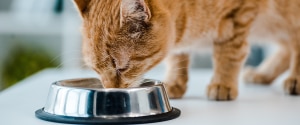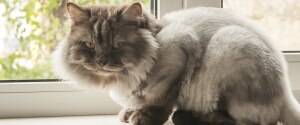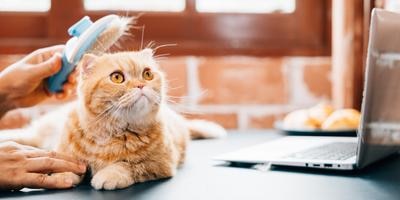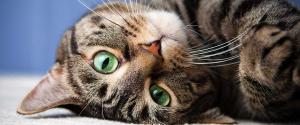
It can be hard to recognize signs of old age in cats as they don’t get fine lines and wrinkles like humans do. Changes in your cat are most likely to start on the inside as they approach their golden years, and they will gradually age as we do. Read on to learn at what age a cat is considered a senior and what signs of ageing to look out for.
At What Age is a Cat Considered a Senior?
Although there is no exact age at which a cat is considered a senior, they are generally considered to be in the senior stage of their lives when they reach the age of seven. At this age, you may start to notice that your cat is slowing down a little and taking life a bit easier.
Taking life a bit easier and a slowing metabolism means that your senior cat is not using the same amount of energy daily, so they don’t need as many calories to keep them going. This change should be reflected in your cat’s diet to make sure that they’re not overfed and can maintain a healthy body weight. The best way to provide your senior cat with the proper nutrition they need is by feeding a senior cat food.
Signs and Symptoms of Ageing
When caring for your senior pet, knowing what to look out for is as important as feeding them a proper diet and providing them with love. Below is a list of signs of ageing that can help you understand the changes your cat is going through as they age and instances where they might need treatment.
Osteoarthritis
Senior cats can suffer from osteoarthritis, resulting in stiff or painful joints. You may notice that it takes your cat longer to get up or that they are stiffer than normal in their movements. Matted fur is also a sign of osteoarthritis, as your cat might not be flexible enough to be able to groom themselves properly.
If your cat is suffering from osteoarthritis, make sure their food is easy to reach. Spend some time with your cat when they eat to make sure they can access it and can eat a healthy amount.
Kidney problems
Older cats can sometimes develop kidney problems. Symptoms include drinking or urinating excessively, or urinating without control. If you notice your cat doing either of these, take them for a check-up with the vet as soon as possible to seek treatment, as these signs could also indicate diabetes or hormonal problems.
Heart and respiratory conditions
Cats aren’t open-mouth breathers, so if you notice them panting then it could suggest that they are suffering from a heart or respiratory condition. Other symptoms can include your cat seeming more lethargic than usual, having difficulty in catching their breath, or bolting upright to try to breathe easier.
Growths
If you spot any growths, lumps or warts on your cat, they should be investigated by your vet. Chances are that they are benign, but it is best to rule out any more serious issues like cancer.
Unusual behaviour
With old age, cats can sometimes exhibit strange or unexpected behaviour. This can include howling and meowing randomly, going to the bathroom in inappropriate places, looking confused and forgetting behaviours such as using the litter box. Speak to your vet if you notice these behaviours happening and if they are causing a problem.
Cataracts
Senior cats can experience cataracts and nuclear sclerosis – two conditions that both exhibit a hazy blue-ish appearance in the eye, but have different side effects. A visit to your vet will be able to distinguish between the two conditions.
Hyperthyroidism
Hyperthyroidism is very common in senior cats. The condition can upset a cat’s usual metabolic rate, meaning that they burn energy too quickly. This means that your cat will have a bigger appetite but lose weight quite rapidly. Other symptoms of this condition include dull fur and erratic behaviour such as hyperactivity. If you spot any of these symptoms, speak to your vet.
If you recognize any of the symptoms listed above that may signal health issues in your senior cat, or if you’re concerned about your cat’s wellbeing, make sure to speak to your vet. With the proper nutrition, your usual vet check-ups and a little extra tender loving care, you can ensure that your cat stays healthy happy throughout their later years.


